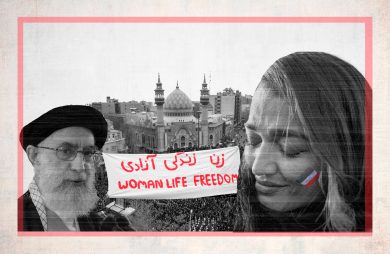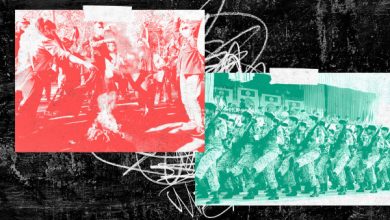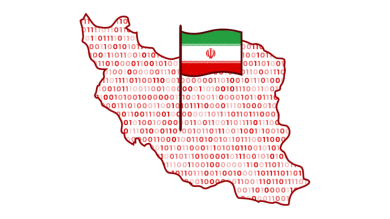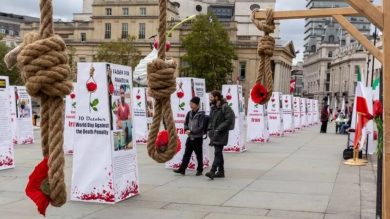In September 2022, the world witnessed the tragic death of Mahsa Jina Amini, a 22-year-old Kurdish woman, after she was arrested by Iran’s “morality police” for allegedly violating hijab laws. Her death sparked an unprecedented wave of protests, ignited by Iranian women and supported by citizens across social, ethnic, and gender lines. But what began as a national uprising quickly reverberated globally, triggering protests, solidarity campaigns, and conversations about women’s rights, authoritarianism, and resistance across the world.
This is not just Iran’s story anymore. It is a global story of defiance, solidarity, and the rising power of women-led movements. This opinion piece examines how Iran’s uprising has rippled across borders, inspired global movements, challenged regimes, and renewed international conversations on freedom and gender equality.
1. Women at the Frontlines: Reclaiming Voice and Power
The slogan “Women, Life, Freedom”—rooted in Kurdish resistance—has become the rallying cry of the Iranian protests. Iranian women, often portrayed as victims of repression, are now firmly seen as leaders of revolution. Their fearless acts—removing mandatory hijabs, dancing in public, leading chants—have challenged the very foundations of the Islamic Republic.
This uprising is a culmination of decades of resistance. For years, Iranian women have faced legal, cultural, and political barriers. They’ve been excluded from public life, harassed, policed, imprisoned, and even executed. And yet, they lead.
The world took notice. Iranian women’s courage forced global media, governments, and international organizations to confront the implications of state-imposed gender apartheid.
2. A Catalyst for Global Feminist Movements
While feminist movements have surged globally over the past two decades, the Iranian uprising gave them new momentum. Women in other authoritarian countries saw their reflection in Iran. From Afghanistan’s ban on female education to Saudi Arabia’s male guardianship laws, women realized their struggles were connected.
The visibility of Iranian women inspired renewed activism in:
• Latin America, where protests against femicide intensified.
• Europe, where feminists mobilized solidarity events and petitioned for sanctions on Iranian officials.
• North America, where Iranian diaspora communities sparked campus movements and policy lobbying.
This uprising reframed feminism as not just a Western ideal, but a universal fight for dignity, relevant in Tehran, Kabul, Paris, and beyond.
3. The Role of the Iranian Diaspora
One of the most visible ripple effects came from the Iranian diaspora—particularly women—who became global amplifiers of the uprising. Figures like Masih Alinejad, Nazanin Boniadi, and countless exiled journalists and artists used their platforms to:
• Share videos and stories from inside Iran.
• Organize international rallies and protests.
• Lobby governments to designate the IRGC as a terrorist organization.
• Pressure the media to give Iran sustained coverage.
Diaspora-led demonstrations took place in Berlin, Toronto, Los Angeles, Paris, and Sydney, often attracting tens of thousands. These events were not only powerful symbols of solidarity but also created transnational alliances with other women’s movements around the world.
4. Challenging Global Norms on Compulsory Modesty Laws
The Iranian uprising forced a global reckoning on compulsory dress codes, especially those imposed on women by state law. It led to:
• Debates in United Nations panels about the balance between religious freedom and women’s rights.
• Renewed campaigns in Middle Eastern and North African countries questioning local modesty laws.
• A shift in how Western liberal circles discuss hijab: recognizing that choice is key, and compulsion, whether to wear or not wear, must be rejected.
This shift challenged many to reconsider assumptions, including those who once viewed criticism of hijab laws solely through a colonial or Islamophobic lens. The voices of Iranian women themselves made it clear: resisting forced modesty is not anti-religion—it’s pro-choice.
5. Cultural Expressions of Resistance: Art, Music, and Film
Iran’s women-led uprising has also deeply impacted global art and media. Artists across continents produced works inspired by the movement, using:
• Murals, graffiti, and digital art to honor protest victims.
• Songs, such as Shervin Hajipour’s Grammy-winning “Baraye,” which became an anthem of the revolution.
• Documentaries and short films showcased at international festivals, giving visibility to resistance under censorship.
This artistic wave elevated the issue to audiences beyond politics, connecting people emotionally, visually, and viscerally to Iran’s struggle.
6. Shaping Global Policy and Human Rights Conversations
The uprising changed how governments and international institutions approach Iran. For decades, Iran policy was largely framed around nuclear deals and regional security. But the women-led movement forced a pivot:
• European Parliament passed resolutions condemning gender apartheid in Iran.
• Canada and the U.S. imposed targeted sanctions on Iranian morality police and IRGC members.
• Global human rights organizations, like Amnesty International and Human Rights Watch, amplified women’s stories as central to Iran’s democratic aspirations.
Furthermore, the movement prompted discussions about recognizing gender apartheid as an international crime—potentially placing Iran among regimes that systemically oppress women.
7. Inspiring Youth Movements Across the World
Young people globally—especially young women—connected deeply with the Iranian movement. On TikTok, Instagram, and Twitter, they:
• Shared protest footage.
• Created educational content about Iran’s laws and history.
• Joined hashtags like #MahsaAmini, #WomenLifeFreedom, and #IranRevolution.
Schools and universities in Europe and North America witnessed walkouts, panel discussions, and campus art installations in solidarity with Iranian women.
The interconnectedness of global youth, combined with their fluency in digital activism, gave the Iranian uprising longer life and louder reach than previous protests.
8. A Blueprint for Future Resistance
Beyond Iran, the uprising became a template for other women-led resistance movements:
• Afghan women protesting the Taliban’s bans on education cited Iranian protesters as inspiration.
• Palestinian and Kurdish women highlighted the shared struggle against militarized patriarchy.
• Ukrainian women activists connected their own fight for sovereignty and freedom with that of Iranian women.
The message is clear: wherever freedom is denied, and wherever women are silenced, resistance will rise—and often, it will be women who lead.
9. The Risk of Silence and the Power of Continued Pressure
While global momentum was strong in the early months of the uprising, attention wanes—as it often does. But Iranian women continue to resist:
• Striking workers and students demand change.
• Women remove hijabs in defiance of renewed crackdowns.
• Families of political prisoners campaign for their loved ones.
The risk is that the world grows silent, and the regime becomes emboldened. Sustained global solidarity is essential—not just in headlines, but in policy, aid, advocacy, and visibility.
Conclusion: A Movement That Belongs to the World
The Iranian women’s uprising began as a protest against a brutal death—but evolved into a movement for life. It’s not only about Iran. It’s about the power of women to ignite change, the universal hunger for freedom, and the belief that even the most repressive regimes can be challenged by courage and collective action.
Its ripple effect has touched laws, art, activism, diplomacy, and global feminist consciousness. And while the battle for a free Iran continues, the world must remember:
Join Our Newsletter!
Stay informed with the latest updates, news, and ways to take action in the fight for justice and global security. Sign up now to get updates delivered straight to your inbox!





